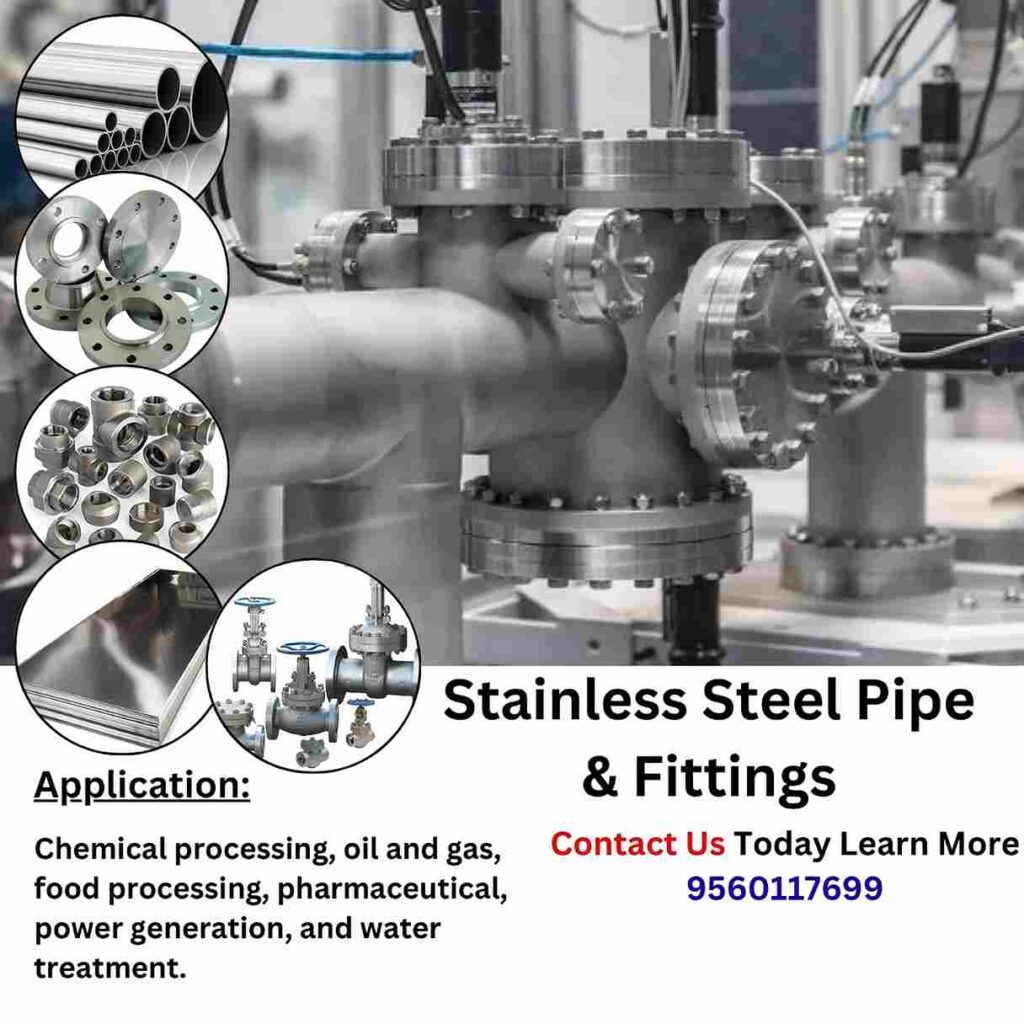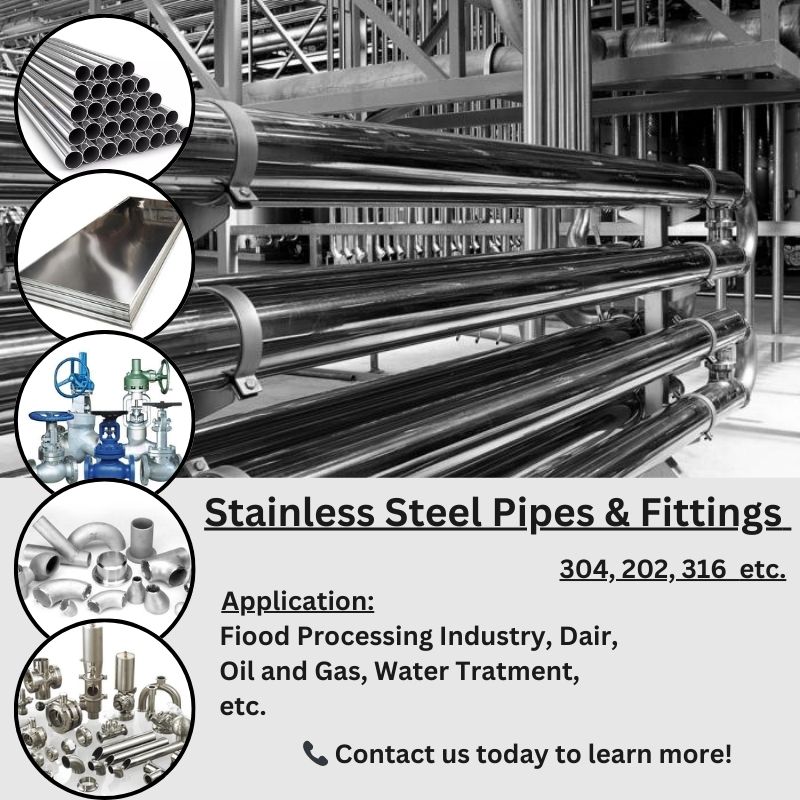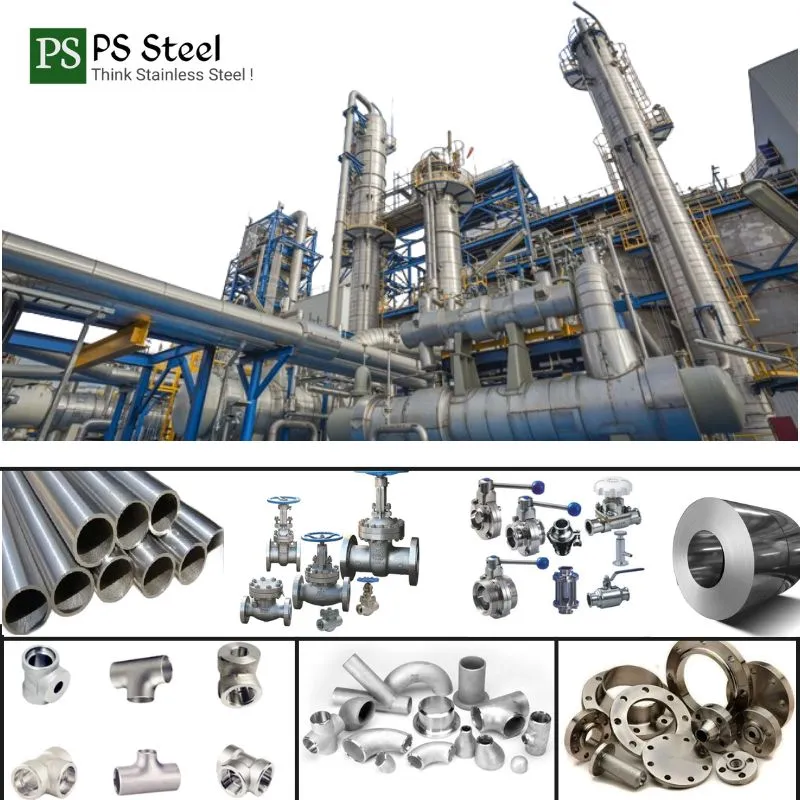Comprehensive Guide to Stainless Steel Pipes: Types, Grades, and Uses
SS Tee Fittings | Stud Ends Fittings | SS Cross Fittngs | Reducing Tee Fittings |
SS U Bend Steel Fittings | SS 90 Degree Elbow Fittings | Seamless Reducers | Lap Joint Stub End Fittings |
SS Y Type Elbow Fittings | SS 180 Degree Elbow Fittings | SS Elbow Pipe Fittings | SS Weld Reducers |
Eccentric Pipe Fittings | Weld Eccentric Pipe Fittings | SS End Cap Fittings | SS Pipe Fittings Elbow |
SS PIPES  | SS TUBES  | RECTANGULAR  | SS SQUARE  |
SS CROSS FITTINGS  | SS FLANGE FITTING  | SS PIPE FITTINGS  | Reducer Fitting  |
SS ANGLES  | SS PIPE FITTINGS  | COMPRESSION FITTINGS  | Valves  |
SS NUT BOLTS  | SS FLAT BARS, RODS  | SS COILS SHEET  | SS SHEETS, PLATES  |
Welcome to the Ultimate Guide on Stainless Steel Pipes!
Hey there! If you’ve landed here, you’re probably on a quest to learn all about stainless steel pipes. Maybe you’re a DIY enthusiast, a contractor, or just curious about what makes these pipes so special. Whatever your reason, you’re in the right place. Let’s dive into the fascinating world of stainless steel pipes!

What Makes Stainless Steel Pipes So Special?
First things first, why all the fuss about stainless steel pipes? Well, these pipes are like the superheroes of the piping world. They’re incredibly durable, resist corrosion, and can handle extreme temperatures and pressures. Whether it’s for plumbing, construction, or industrial use, stainless steel pipes are a go-to choice for many.
Types of Stainless Steel Pipes
Stainless steel pipes come in various types, each with its unique characteristics and uses. Let’s break down the main types:
- Seamless Stainless Steel Pipes
- What are they? These pipes are made from a solid billet and have no seam, making them incredibly strong and ideal for high-pressure applications.
- Where are they used? Commonly used in industries like oil and gas, chemical, and power generation where high-pressure conditions are prevalent.
- Welded Stainless Steel Pipes
- What are they? Made by welding a strip of stainless steel, these pipes are generally more affordable and are available in larger sizes.
- Where are they used? Perfect for applications where high pressure isn’t a concern, such as in low-pressure plumbing and decorative applications.
- Electric Fusion Welded (EFW) Pipes
- What are they? These are similar to welded pipes but are fused using an electric charge.
- Where are they used? Often found in water and wastewater treatment plants due to their reliability and cost-effectiveness.
- Longitudinal Submerged Arc-Welded (LSAW) Pipes
- What are they? These are made by bending and welding a steel plate.
- Where are they used? Ideal for long-distance pipelines and large-diameter applications.

Understanding Stainless Steel Grades
Now, let’s talk grades. No, not the grades you get in school, but the different classifications of stainless steel. Each grade has specific properties making it suitable for various applications.
- 304 Stainless Steel
- Features: This is the most common stainless steel grade. It’s highly resistant to corrosion and has excellent forming and welding characteristics.
- Uses: Perfect for kitchen equipment, storage tanks, and piping systems.
- 316 Stainless Steel
- Features: Contains molybdenum, which makes it more resistant to corrosion, especially against chlorides and other industrial solvents.
- Uses: Ideal for marine applications, chemical processing, and medical devices.
- 409 Stainless Steel
- Features: Known for its good formability and weldability, though it has lower corrosion resistance compared to 304 and 316.
- Uses: Often used in automotive exhaust systems and other applications where resistance to high temperatures is crucial.
- 430 Stainless Steel
- Features: Offers good corrosion resistance and is more cost-effective.
- Uses: Common in domestic appliances and decorative applications.
Where Are Stainless Steel Pipes Used?

The versatility of stainless steel pipes means they’re used in a wide range of applications. Here are some key areas:
- Construction
- Used in structural applications due to their strength and durability.
- Ideal for architectural features and support structures.
- Plumbing
- Resistant to corrosion and staining, making them perfect for water systems.
- Used in both residential and commercial plumbing.
- Industrial
- Essential in industries like oil and gas, chemical processing, and power generation.
- Handles extreme conditions, including high pressure and temperature.
- Food and Beverage
- Hygienic properties make them ideal for transporting food and beverages.
- Easy to clean and maintain, ensuring safety and quality.
- Automotive
- Used in exhaust systems and other components due to their heat resistance.
- Provides longevity and reliability in harsh conditions.
How to Choose the Right Stainless Steel Pipe
Selecting the right stainless steel pipe for your project involves considering several factors:
- Application: Determine the specific use case. High-pressure applications might require seamless pipes, while decorative applications can use welded pipes.
- Environment: Consider the environment where the pipe will be used. For corrosive environments, a grade like 316 might be necessary.
- Budget: Stainless steel pipes come at various price points. Balancing cost with performance requirements is key.
- Compliance: Ensure the pipes meet relevant industry standards and certifications.
Maintenance and Longevity
One of the reasons stainless steel pipes are so popular is their low maintenance requirements. Here are a few tips to keep them in top shape:
- Regular Cleaning: Clean the pipes periodically to prevent buildup of dirt and grime.
- Inspection: Regularly inspect for signs of wear or corrosion, especially in harsh environments.
- Protection: For outdoor applications, consider protective coatings to extend lifespan.
Final Thoughts
Stainless steel pipes are an excellent choice for a wide range of applications, thanks to their durability, resistance to corrosion, and versatility. By understanding the different types, grades, and uses, you can make an informed decision for your project. Whether you’re constructing a new building, setting up a plumbing system, or working on an industrial application, stainless steel pipes are sure to meet your needs.
Got more questions or need further details? Feel free to reach out or drop a comment below. We’re here to help you make the best choice for your piping needs!

Review Comprehensive Guide to Stainless Steel Pipes: Types, Grades, and Uses.